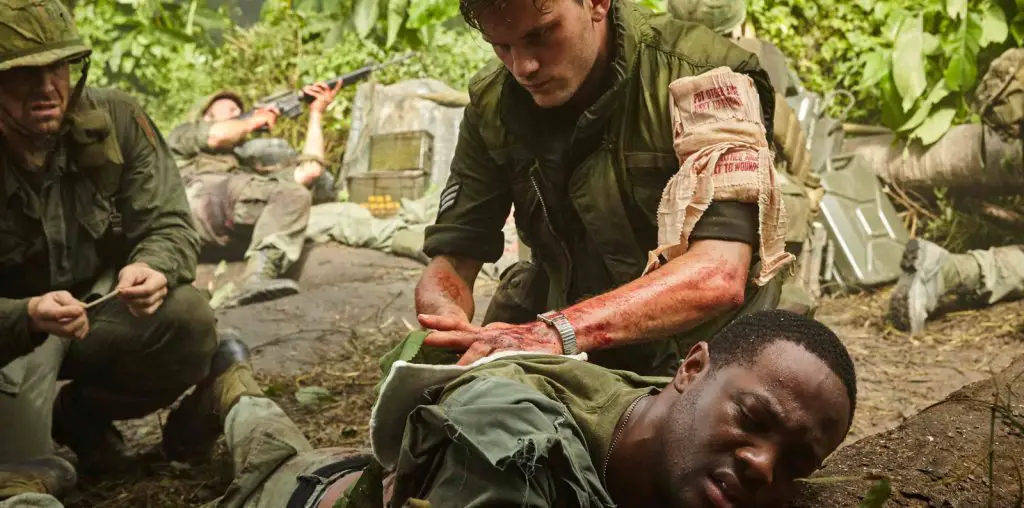
Arguably the least-known iteration of Rod Serling’s venerable franchise, the 1985 relaunch of “The Twilight Zone” boasted some of the creepiest storytelling to emerge from the boob tube during the 1980s. It also featured a fair proportion of insipid junk, but the beauty of the series’ arrival on DVD is that the best stuff can now be revisited over and over. And, hey, let’s be honest — if there’s one demographic out there with unending patience for substandard programming, it’s hardcore fantasy fans. Stand up if you’re still able to enjoy episodes of the original “Battlestar Galactica.” Um, anyone? Please, I’m dyin’ here.
Anyway, Image Entertainment recently issued a chunky 6-disc set of the 1980s “Twilight Zone,” comprising the first season’s 22 episodes. That last number is a bit of an undersell, however, because the hour-long program featured two or three episodes each week, so there are over 50 short stories on the set. And “short stories” is absolutely the right term, because this incarnation maintained Serling’s aesthetic of sharp, provocative, literary fantasy. It also added contemporary special effects and, in some cases, gore. It’s fair to say that the vignettes with the most razzle often have the least dazzle; at their worst, pieces of this “Twilight Zone” are disposable sci-fi/horror pulp.
But at their best, segments of this series absolutely kill. Consider the two extremes of “Shatterday” and “Nightcrawlers,” both of which popped up early in the first season.
The kickoff episode, “Shatterday” stars Bruce Willis as Peter, a modern schmuck who meets his doppelganger. Whereas most stories exploring this storied fantasy conceit generally portray the otherworldly twin as pure id — a personification of the protagonist’s worst qualities — the new Peter exemplifies every good thing the protagonist is not. Smoothly directed by Wes Craven and based on a story by fantasy god Harlan Ellison, “Shatterday” is riveting and even moving, although it’s basically a 24-minute Willis monologue. This first outing set a high mark that few subsequent segments reached, and it amplified that in the Twilight Zone, ideas are the greatest spectacle of all.
Having said that, “Nightcrawlers” kicks serious a*s in good part because of its production values and explosive visuals. Directed by master provocateur William Friedkin from a taut script by Philip DeGuere — the guiding force behind the entire 1980s “Zone” — “Nightcrawlers” concerns a weirdly gifted Vietnam vet who stumbles into a rural diner full of very unlucky patrons. The fantastic element of this one is better discovered than described, but suffice it to say that Friedkin assaults viewers on a level that’s as visceral as Craven’s approach to “Shatterday” is intellectual.
Even though few segments reach the level of “Shatterday” and “Nightcrawlers” — or even try to do so — the vibe of the series is seductive. The genius of Serling’s formula is nearly enough to make even shallow installments palatable, and it’s an adventure to see how a variety of big names rose or fell when faced with the challenge of adding to Serling’s legacy. Directors represented in the Image set include feature guys Joe Dante, John Hancock, Robert Downey, John Milius and Tommy Lee Wallace. Be warned, however — the infamous Alan Smithee lends his not-so-golden touch to the segment “Paladin of the Lost Hour.”
And, as the front of the Image box promises, the episodes feature a parade of famous actors — Adrienne Barbeau, John Carradine, Peter Coyote, Morgan Freeman, Helen Mirren, William Petersen, and so on. It’s often the nominally lesser lights who really soar, though; Scott Paulin is memorably disturbing as the vet in “Nightcrawlers,” and PBS narrator extraordinaire Richard Kiley lends his elegant presence to “The Last Defender of Camelot.”
Given its nature as an anthology series — and given that a number of segments are just plain awful — this “Twilight Zone” is a hit-or-miss proposition. But speaking as someone who remembers the best episodes vividly twenty years later, I’m looking forward to continuing my exploration of this set. Hell, the box is worth checking out if only to revisit the masterful reworking of the show’s theme music, made even more freaky-deaky because the Grateful Dead did the 1980s version. Talk about some folks who knew a thing or two about tripping to other dimensions.
